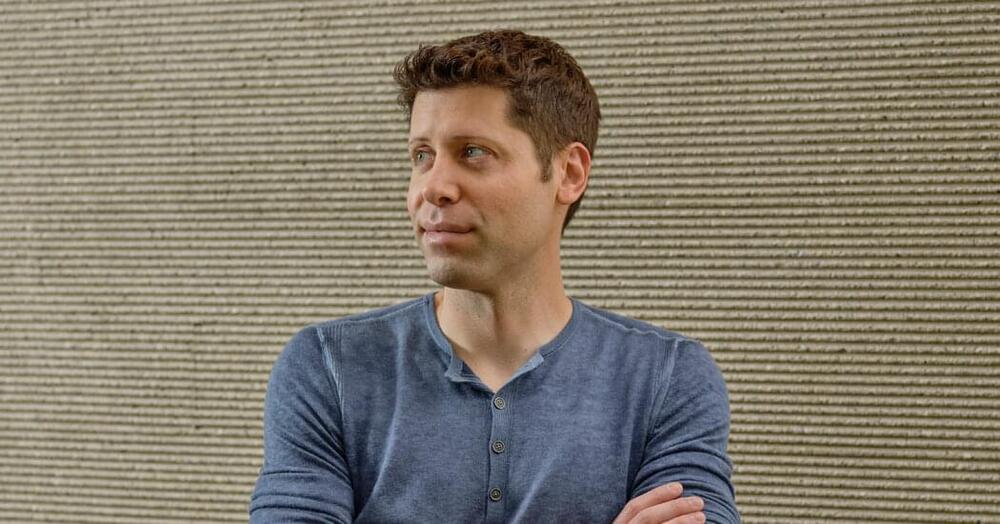Feb 16, 2023
How ChatGPT Kicked Off an A.I. Arms Race
Posted by Kelvin Dafiaghor in categories: military, robotics/AI
The Shift.
Even inside the company, the chatbot’s popularity has come as something of a shock.

The Shift.
Even inside the company, the chatbot’s popularity has come as something of a shock.
AI automation is being deployed throughout the drug development pipeline, opening up the possibility of faster, cheaper pharmaceuticals.
YouTube CEO Susan Wojcicki is stepping down after nearly a decade in the role, the company shared in a blog post Thursday.
Wojcicki told staff she’s departing the top job to “start a new chapter focused on my family, health, and personal projects I’m passionate about.” She’ll continue to help advise the company, she said.
She’ll be replaced by Neal Mohan, who has been YouTube’s chief product officer since 2015 and helped launch the company’s TikTok competitor, Shorts. Vox’s Peter Kafka first reported the news.
For years, researchers have searched for the working principles of self-assembly that can build a cell (complex biological organism) as well as a crystal (far simpler inorganic material) in the same way.
Now, a team of scientists in Turkey has demonstrated the fundamental principles of a universal self-assembly process acting on a range of materials starting from a few atoms-large quantum dots up to nearly 100 trillion atoms-large human cells. Their method is highlighted in Nature Physics.
“To initiate self-assembly, either you force the system to deliver a specific outcome, or you use its inner dynamics to your advantage for universal outcomes. We followed the second approach,” says Dr. Serim Ilday of Bilkent University-UNAM, who lead the study.
The low temperatures and high ultraviolet (UV) radiation levels at the surface of Mars today currently preclude the survival of life anywhere except perhaps in limited subsurface niches.
Several ideas for making the Martian surface more habitable have been put forward previously, but they all involve massive environmental modification that will be well beyond human capability for the foreseeable future. Here we present a new approach to this problem. We show that widespread regions of the surface of Mars could be made habitable to photosynthetic life in the future via a solid-state analogue to Earth’s atmospheric greenhouse effect.
Specifically, we demonstrate via experiments and modelling that under Martian environmental conditions, a 2 to 3-cm thick layer of silica (SiO2) aerogel will simultaneously transmit sufficient visible light for photosynthesis, block hazardous ultraviolet radiation, and raise temperatures underneath permanently to above the melting point of water, without the need for any internal heat source. Placing silica aerogel shields over sufficiently ice-rich regions of the Martian surface could therefore allow photosynthetic life to survive there with minimal subsequent intervention.
While most of us take the ground beneath our feet for granted, written within its complex layers, like the pages of a book, is Earth’s history. Our history.
Research shows there are little-known chapters in that history, deep within Earth’s past. In fact, Earth’s inner core appears to have another even more inner core within it.
“Traditionally we’ve been taught the Earth has four main layers: the crust, the mantle, the outer core and the inner core,” Australian National University geophysicist Joanne Stephenson explained in 2021.
A single dose of psilocybin, the active compound in “magic mushrooms,” given to mice prompted a long-lasting increase in the connections between neurons.
In a new study, Yale researchers show that a single dose of psilocybin given to mice prompted an immediate and long-lasting increase in connections between neurons. The findings are published July 5 in the journal Neuron.
University of Cambridge, working with colleagues from Austria, found a new way to make a possible replacement for rare-earth magnets: tetrataenite, a ‘cosmic magnet’ that takes millions of years to develop naturally in meteorites.
Previous attempts to make tetrataenite in the laboratory have relied on impractical, extreme methods. But the addition of a common element — phosphorus — could mean that it’s possible to make tetrataenite artificially and at scale, without any specialised treatment or expensive techniques.
The results are reported in the journal Advanced Science. A patent application on the technology has been filed by Cambridge Enterprise, the University’s commercialisation arm, and the Austrian Academy of Sciences.
Between 75,000 and 50,000 years ago, humans began to make their way across the megacontinent of Sahul, a landmass that connected what is now Australia, Tasmania, New Guinea, and the Aru Islands.
New research reveals more about the routes used by these early humans and the length of time it took for them to fully explore the extremities of Sahul. It could have taken up to 10,000 years for the vast area to be completely covered by these intrepid humans, which is twice as long as previously thought.
To refine their estimates, researchers developed a new, more sophisticated model that factored in influences on travel, like the land’s ability to provide food, water source distribution, and the landscape’s topography.
